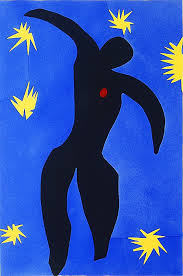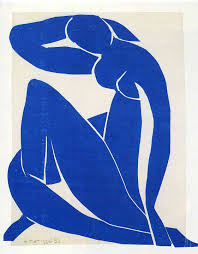BRUEGEL, WILLIAMS, MATISSE and ICARUS:
AN INTERPRETIVE NOTE to STILL LIFE
The myth of Icarus, as interpreted in the art of Pieter Bruegel and the poetry of William Carlos Williams, figures prominently in the symbolism woven into Still Life and the revolutionary art of Henri Matisse. From Virgin and Whore: The Image of Women in the Poetry of William Carlos Williams, Audrey Rodgers had this to say about the masterpiece traditionally attributed to Bruegel called “Landscape with the Fall of Icarus:”

“Landscape with the Fall of Icarus” touches upon the Greek myth of the tragedy of Icarus. As we know, according to Ovid and Appolodorus, Icarus, son of Daedalus, took flight from imprisonment wearing the fragile wings his father had fashioned for him. Heedless of his father’s warning to keep a middle course over the sea and avoid closeness with the sun, the soaring boy exultantly flew too close to the burning sun, which melted his wings so that Icarus hurtled to the sea and death. The death of Icarus, the poet tells us “According to Brueghel,” took place in spring when the year was emerging in all its pageantry. The irony of the death of Icarus, who has always been an emblem for the poet’s upward flight that ends in tragedy, is that his death goes unnoticed in the spring – a mere splash in the sea [note the legs of Icarus, lower right]. The fear of all poets – that their passing will go “quite unnoticed” – is an old and pervasive theme. That Williams reiterates the theme is significant in the life of a poet who always felt the world had never fully recognized his accomplishments.
In his afterlife, Emily Foves has given her late husband wings. Emily has chosen to remember Robert as an idealized person that he never was. She has imagined in him a perfection, and even a fidelity, that is not only inaccurate, but that has kept her from living her own life. She has not grown. She has not lived. Her life is devoted to a careful stasis.
A paratrooper in the Army Air Corps, Robert was shot down during a night jump over the Rhone Valley, sending him spiraling into the Rhone River. Emily has always wondered whether it was the shot in the heart that killed him or whether he was still alive and drowned when he landed in the water. Marveling at the massive Carlyle seascapes in the local museum, Emily considers how easy it would be for a god to pluck a drowning man from the water, begging the question of why a god might choose not to do so. Not “God,” but “a god.” Her musing is both a nod to the polytheism and the Hellenistic context of the Icarus myth, and a foreshadowing of the revelation, then only moments away, when she learns that her beloved Robert is not all she had reimagined him to be. It is a revelation through which Emily experiences, emotionally anyway, Robert’s fall from grace in her own eyes.
In Still Life, slightly different effect is given to the artistic (poetical and visual) interpretation of the Icarus myth, pulling focus away from the feet slipping into the sea and broadening it to encompass the surrounding pageantry of the living: even the tragedy of untimely death can be, and should be, dwarfed in the full bloom of young life. In her first dream, it is Henri Matisse’s “Icarus” that dominates the dining room wall, a dark silhouette of a falling man, surrounded by stars that could as easily be exploding munitions and with a red mark on his chest that could as easily be a wound as a heart. In her second dream, Emily notes that Icarus is gone. Delia May laughs, saying to the old man that Emily “does not know her Bruegel” – Emily does not understand that this is her Spring and her beloved Robert should by now have gone the way of Icarus. Says the old man to Emily: My dear, this is your spring. You are burning inside. Seeing that Matisse’s “Blue Nude,” with all of its youthful sensuality, has replaced the falling Icarus, Emily’s dream-self understands: Icarus is gone. And yet, Everything was left. Everything.
The old man in the dream is Henri Matisse, the artist who used variations on simple images and shocking colors to evolve impressionism. Matisse, the leader of a group of young, rebellious artists who ushered the age of modern art into early Twentieth Century Paris, was the central figure in the artistic movement known as “fauvism”. The Fauves (or “Wild Beasts”) were iconoclasts of the Parisian art scene using an insurrection of color and form to encourage an emotional resonance and the abandonment of emotional reserve too long associated with artistic appreciation. Admirers of Gauguin and van Gogh, the Fauves sought nothing less than to shock the artistic conscience. The Parisian art critics did not go along willingly, likening the style to “a pot of color flung in the face of the public.” This “pot of color” appears on the table in Emily’s second dream, albeit in the form of fruit that begins to liquefy and spill onto the table and the floor.
The wife of Henri Matisse was named Amelie. Here there is a phonetic parallelism at work in the name of the Still Life protagonist: “Amelie” becomes the Americanized “Emily.” The character arc moves Emily from the actual wife of Robert Foves to the symbolic wife of Henri Matisse, where passion and color, rather than marital deference, rule her existence. She is simultaneously his wife and his daughter; he serves the role of Robert and the father figure whose legacy she is destined to inherit. Emily’s last name, “Foves,” is also intended as a phonetic slight of hand: Matisse was one of the Fauves, the Wild Beasts, who shocked artistic sensibilities with an unabashed use of color and form. Again, Emily evolves in this story from the literal to the symbolic, from Foves to Fauves. Clues to this progression are found in the fact that in the first dream, Emily is speaking English to Matisse’s French, and in the second dream, she is speaking French to Matisse’s English. In the first, she understands, but does not speak; in the second, she speaks and understands so well that Matisse may as well be speaking English, and he is.
The title of the story – Still Life – encapsulates its meaning, for this is a story about the suspension of movement; of growth; of change. It is a story about living only in the dry, dusty simulacrum of life. There are many examples of still lives in the story. The flowers on Emily’s table. The carvings on Tom Douglas’ mantle. The portraits by Artie Griggs, who renders his comrades in much the same way that Emily renders Robert in her own mind. Of course, Emily herself is a still life. Without any appreciation for the irony that she is describing herself, Emily asks Artie Griggs if he thinks a portrait is just another still life; a human still life. One is reminded of Emily’s portrait of Robert, freezing him within the frame on her dresser, just as she has enforced a kind of stillness within the frame of her own existence. Emily has stopped living out of grief for a husband long dead in the Second World War. She has no spontaneously expressive existence. Once a promising artist, she spends her days faithful to a dead past. She takes anxiety pills to control an hysteria which we are to understand is only an urge to break free – to wake up – and continue living.
Emily has whitewashed the humanity from her husband’s memory until he is perfect – until he is almost mythical. She has lifted him so high in her esteem that, like Icarus, he is bound to fall. And fall he does. When Emily encounters Artie Griggs, a painter and former soldier who attended basic training with Robert (Artie calls him “Bobby”), she learns that her husband was not who she had forced herself to remember. It is the continuation of an unraveling for Emily which began in the sudden and powerful presence of Delia May, and which ends in a resolve to move in with a friend in Florida and resume painting for a living. Before she leaves, Emily gives away one of her old paintings, a relic of her creative youth, to the milkman. The gift marks a rebirth, in every sense, including sexual, for Emily. She has transformed from a state of death to a state of fully empowered sensuality. From a vicarious existence through the memory of a dead husband to a burgeoning existence in her own right. That transformation is found in the painting that dominates the first dream (Matisse’s The Fall of Icarus) to the painting the second dream (Matisse’s Blue Nude). Emily’s is a process of leaving behind the past and embracing the future; a process of reanimating all that has gone still.


There is also a sense here that the passion inherent in living is infectious; that it changes everything and everyone it touches. Thus, Delia May, with her confident sexuality and assertiveness, motivated by a new love for a crime writer she was initially hired to follow, nudges Emily back into motion, reintroducing her to the feeling of fresh longing. Tom Douglas, too, is changed forever, and we leave him restless with his station in life, wanting more from himself and the world than the still life of farm animals he has carved out of wood and arranged on his mantle. The flaming pomegranate, with its bright red juice and its spilling profusion of seeds, is an image of creative fertility and expressive vitality. This is the very fruit that, in the palm of Henri Matisse’s dream likeness, bursts into flame. The story mixes blood and fire as the very essence of living.
Still Life also intends to present an under current of racial tension. The story is set in the late forties when African-Americans were still far from equal citizens. There is a veiled menace from the security guard in the first dream, as well as a furtive white guilt. Here is a black man wrapped in the white uniform of servitude. He also represents the interior beast-like quality that Matisse has befriended if not tamed and which Emily is afraid of in herself; for once it escapes, it will completely change her world. By the second dream, the black man is following Emily and then leading her by the hand, clearly her guide and ally.
In the end, it is a story of choices. There is a line in the first dream – “as she turned from Mona Lisa to consider Whistler’s Mother” – that suggests the progression of Emily’s arc through life if she does not choose to awaken from her living dream and resume the adventure of actually living: one from youthful beauty to an old withered spinster with no life but to sit in a chair and wait, perhaps for someone who will never return.
